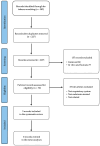In Vivo Evidence of Melatonin's Protective Role in Alkylating-Agent-Induced Pulmonary Toxicity: A Systematic Review
- PMID: 40563344
- PMCID: PMC12189487
- DOI: 10.3390/antiox14060712
In Vivo Evidence of Melatonin's Protective Role in Alkylating-Agent-Induced Pulmonary Toxicity: A Systematic Review
Abstract
Alkylating agents, historically employed as chemical warfare agents and currently used as chemotherapeutic drugs, are known to induce significant pulmonary toxicity. Current clinical interventions often fail to fully prevent or reverse these pathological changes, highlighting the urgent need for safe, broad-spectrum therapeutic agents that are effective across diverse exposure scenarios. Melatonin has emerged as a promising protective agent due to its antioxidant, anti-inflammatory, and immunomodulatory properties, along with a well-established safety profile. This systematic review evaluates the potential of melatonin in mitigating vesicant-induced pulmonary damage, synthesizing and critically analyzing preclinical evidence in accordance with the PRISMA guidelines. Three in vivo rodent studies met the inclusion criteria and were analyzed. In all cases, melatonin demonstrated protective effects against alkylating agents such as mechlorethamine (HN2) and cyclophosphamide (CP). These effects were dose-dependent and observed across various animal models, administration protocols, and dosages (ranging from 2.5 to 100 mg/kg), highlighting the importance of context-specific considerations. The human equivalent doses (HEDs) ranged from 12 to 973 mg per day, suggesting that the effective doses may exceed those typically used in clinical trials for other conditions. Melatonin's pleiotropic mechanisms, including a reduction in oxidative stress, the modulation of inflammatory pathways, and support for tissue repair, reinforce its therapeutic potential in both prophylactic and treatment settings for alkylating agent exposure. Nonetheless, this review underscores the critical need for further randomized clinical trials to establish the optimal dosing strategies, refine treatment protocols, and fully elucidate melatonin's role in managing alkylating-agent-induced pulmonary toxicity.
Keywords: alkylating agents; histopathology; human equivalent doses; inflammation; lung toxicity; melatonin; oxidative stress; systematic review.
Conflict of interest statement
The authors declare no conflicts of interest.
Similar articles
-
Topotecan, pegylated liposomal doxorubicin hydrochloride and paclitaxel for second-line or subsequent treatment of advanced ovarian cancer: a systematic review and economic evaluation.Health Technol Assess. 2006 Mar;10(9):1-132. iii-iv. doi: 10.3310/hta10090. Health Technol Assess. 2006. PMID: 16545208
-
Drugs for preventing postoperative nausea and vomiting in adults after general anaesthesia: a network meta-analysis.Cochrane Database Syst Rev. 2020 Oct 19;10(10):CD012859. doi: 10.1002/14651858.CD012859.pub2. Cochrane Database Syst Rev. 2020. PMID: 33075160 Free PMC article.
-
Systemic pharmacological treatments for chronic plaque psoriasis: a network meta-analysis.Cochrane Database Syst Rev. 2021 Apr 19;4(4):CD011535. doi: 10.1002/14651858.CD011535.pub4. Cochrane Database Syst Rev. 2021. Update in: Cochrane Database Syst Rev. 2022 May 23;5:CD011535. doi: 10.1002/14651858.CD011535.pub5. PMID: 33871055 Free PMC article. Updated.
-
Pharmacotherapies for sleep disturbances in dementia.Cochrane Database Syst Rev. 2016 Nov 16;11(11):CD009178. doi: 10.1002/14651858.CD009178.pub3. Cochrane Database Syst Rev. 2016. Update in: Cochrane Database Syst Rev. 2020 Nov 15;11:CD009178. doi: 10.1002/14651858.CD009178.pub4. PMID: 27851868 Free PMC article. Updated.
-
Etanercept and efalizumab for the treatment of psoriasis: a systematic review.Health Technol Assess. 2006 Nov;10(46):1-233, i-iv. doi: 10.3310/hta10460. Health Technol Assess. 2006. PMID: 17083854
References
Publication types
Grants and funding
LinkOut - more resources
Full Text Sources
Miscellaneous


